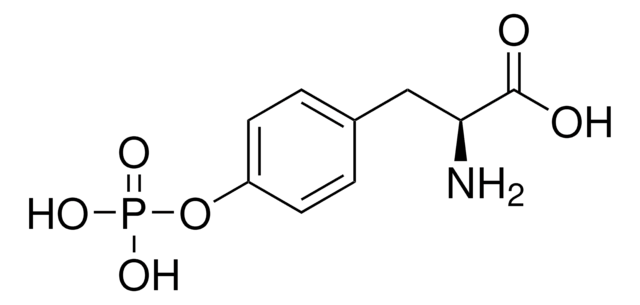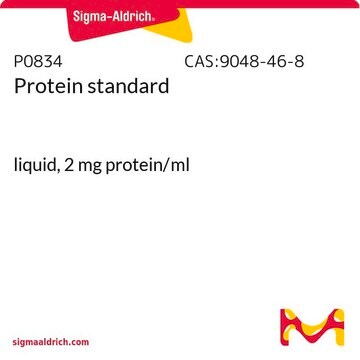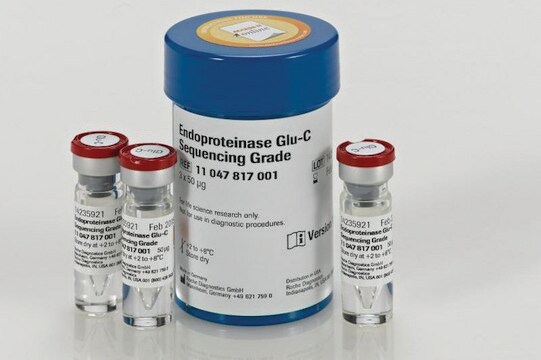17-662
ChIPAb+ EZH2, clone AC22 - ChIP Validated Antibody and Primer Set
clone AC22, from mouse
Synonym(s):
Enhancer of zeste homolog 2, Lysine N-methyltransferase 6, enhancer of zeste 2, enhancer of zeste homolog 2, ENX-1
Sign Into View Organizational & Contract Pricing
All Photos(3)
About This Item
UNSPSC Code:
12352203
eCl@ss:
32160702
NACRES:
NA.32
clone:
AC22, monoclonal
application:
ChIP
WB
WB
species reactivity:
mouse, rat, vertebrates, human
technique(s):
ChIP: suitable
western blot: suitable
western blot: suitable
citations:
56
Recommended Products
biological source
mouse
Quality Level
clone
AC22, monoclonal
species reactivity
mouse, rat, vertebrates, human
manufacturer/tradename
ChIPAb+
Upstate®
technique(s)
ChIP: suitable
western blot: suitable
isotype
IgG2a
NCBI accession no.
UniProt accession no.
shipped in
dry ice
Gene Information
human ... EZH2(2146)
General description
All ChIPAb+ antibodies are individually validated for chromatin precipitation, every lot, every time. Each ChIPAb+ antibody set includes control primers (tested every lot by qPCR) to biologically validate your IP results in a locus-specific context. The qPCR protocol and primer sequences are provided, allowing researchers to validate ChIP protocols when using our antibody in their chromatin context. Each set also includes a negative control antibody to ensure specificity of the ChIP reaction.
The ChIPAb+ EZH2, clone AC22 antibody/primer set includes the EZH2, clone AC22 antibody, a negative control antibody (purified mouse IgG), and qPCR primers which amplify a 135 bp region within the promoter of the human MYT-1 gene. The EZH2, clone AC22 antibody and negative control antibodies are supplied in a scalable "per ChIP" reaction size and can be used to functionally validate the precipitation of EZH2-associated chromatin.
The ChIPAb+ EZH2, clone AC22 antibody/primer set includes the EZH2, clone AC22 antibody, a negative control antibody (purified mouse IgG), and qPCR primers which amplify a 135 bp region within the promoter of the human MYT-1 gene. The EZH2, clone AC22 antibody and negative control antibodies are supplied in a scalable "per ChIP" reaction size and can be used to functionally validate the precipitation of EZH2-associated chromatin.
EZH2 is a polycomb group (PcG) protein that is a catalytic subunit of the PRC2/EED-EZH2 complex, which methylates ′Lys-9′ (H3K9me) and ′Lys-27′ (H3K27me) of histone H3, leading to transcriptional repression of the affected target gene. Able to mono-, di- and trimethylate ′Lys-27′ of histone H3 to form H3K27me1, H3K27me2 and H3K27me3, respectively. Compared to EZH2-containing complexes, it is more abundant in embryonic stem cells and plays a major role in forming H3K27me3, which is required for embryonic stem cell identity and proper differentiation. The PRC2/EED-EZH2 complex may also serve as a recruiting platform for DNA methyltransferases, thereby linking two epigenetic repression systems. Genes repressed by the PRC2/EED-EZH2 complex include HOXC8, HOXA9, MYT1, CDKN2A and retinoic acid target genes. EZH2 can also methylate non-histone proteins such as the transcription factor GATA4 and the nuclear receptor RORA. Regulates the circadian clock via histone methylation at the promoter of the circadian genes. Essential for the CRY1/2-mediated repression of the transcriptional activation of PER1/2 by the CLOCK-ARNTL/BMAL1 heterodimer; involved in the di and trimethylation of ′Lys-27′ of histone H3 on PER1/2 promoters which is necessary for the CRY1/2 proteins to inhibit transcription.
Specificity
Not tested in other species. The immunogen sequence is identical in a wide range of animal and plant species, so broad cross-reactivity is expected.
Recognizes EZH2, MW: ~85-100 kDa.
Immunogen
EZH2, clone AC22 purified antibody is made against a GST fusion protein corresponding to amino acids 353-451 of human EZH2.
Epitope: a.a. 353-451
Application
Chromatin Immunoprecipitation:
Representative lot data.
Sonicated chromatin prepared from HeLa S3 cells (4 X 106 cell equivalents per IP) was subjected to chromatin immunoprecipitation using 1 µg of either a normal mouse IgG or Anti-EZH2, clone AC22 antibody and the Magna ChIP G Kit (Cat. # 17-611).
Successful immunoprecipitation of EZH2-associated DNA fragments was verified by qPCR using GAPDH promoter (negative) and MYT-1 promoter (positive) primers (Please see figures). Data is presented as percent input of each IP sample relative to input chromatin for each amplicon and ChIP sample as indicated.
Please refer to the EZ-Magna G ChIP (Cat. # 17-409) or EZ-ChIP (Cat. # 17-371) protocol for experimental details.
Immunoprecipitation Analysis:
Representative lot data.
HeLa nuclear cell extract was Immunoprecipitated with either anti-EZH2, clone AC22 or mouse IgG and then resolved by electrophoresis, transferred to PVDF and probed with Cat. # 05-1319 anti-EZH2, clone BD43 (1:1000 dilution).
Proteins were visualized using a goat anti-mouse secondary antibody conjugated to HRP (Cat. # AP124P) and a chemiluminescence detection system.
(Please see figures).
Lane 1: Hela nuclear extract immunoprecipitate with anti-EZH2, clone AC22.
Lane 2: Hela nuclear extract immunoprecipitate with IgG.
Representative lot data.
Sonicated chromatin prepared from HeLa S3 cells (4 X 106 cell equivalents per IP) was subjected to chromatin immunoprecipitation using 1 µg of either a normal mouse IgG or Anti-EZH2, clone AC22 antibody and the Magna ChIP G Kit (Cat. # 17-611).
Successful immunoprecipitation of EZH2-associated DNA fragments was verified by qPCR using GAPDH promoter (negative) and MYT-1 promoter (positive) primers (Please see figures). Data is presented as percent input of each IP sample relative to input chromatin for each amplicon and ChIP sample as indicated.
Please refer to the EZ-Magna G ChIP (Cat. # 17-409) or EZ-ChIP (Cat. # 17-371) protocol for experimental details.
Immunoprecipitation Analysis:
Representative lot data.
HeLa nuclear cell extract was Immunoprecipitated with either anti-EZH2, clone AC22 or mouse IgG and then resolved by electrophoresis, transferred to PVDF and probed with Cat. # 05-1319 anti-EZH2, clone BD43 (1:1000 dilution).
Proteins were visualized using a goat anti-mouse secondary antibody conjugated to HRP (Cat. # AP124P) and a chemiluminescence detection system.
(Please see figures).
Lane 1: Hela nuclear extract immunoprecipitate with anti-EZH2, clone AC22.
Lane 2: Hela nuclear extract immunoprecipitate with IgG.
EZH2, clone AC22, ChIP validated antibody & primer set including the ChIP-grade antibody & the specific control PCR primers used for chromatin immunoprecipitation of EZH2.
Research Category
Epigenetics & Nuclear Function
Apoptosis & Cancer
Epigenetics & Nuclear Function
Apoptosis & Cancer
Research Sub Category
Chromatin Biology
Chromatin Biology
Packaging
25 assays per set. Recommended use: ~2 μg antibody per chromatin immunoprecipitation (dependent upon biological context).
Quality
Chromatin Immunoprecipitation:
Sonicated chromatin prepared from HeLa S3 cells (4 X 106 cell equivalents per IP) were subjected to chromatin immunoprecipitation using 2 µg of either a normal mouse IgG or Anti-EZH2, clone AC22 antibody and the Magna ChIP® G Kit (Cat. # 17-611). Successful immunoprecipitation of EZH2-associated DNA fragments was verified by qPCR using Control Primers (Please see figures).
Please refer to the EZ-Magna ChIP G (Cat. # 17-409) or EZ-ChIP (Cat. # 17-371) protocol for experimental details.
Sonicated chromatin prepared from HeLa S3 cells (4 X 106 cell equivalents per IP) were subjected to chromatin immunoprecipitation using 2 µg of either a normal mouse IgG or Anti-EZH2, clone AC22 antibody and the Magna ChIP® G Kit (Cat. # 17-611). Successful immunoprecipitation of EZH2-associated DNA fragments was verified by qPCR using Control Primers (Please see figures).
Please refer to the EZ-Magna ChIP G (Cat. # 17-409) or EZ-ChIP (Cat. # 17-371) protocol for experimental details.
Target description
~85 kDa
Physical form
EZH2, clone AC22 (mouse monoclonal IgG2a). One vial containing 50 μg of protein G purified antibody in 50 μL 0.1M Tris-Glycine, 0.15M NaCl, 0.05% Sodium Azide, pH7.4 before the addition of glycerol to 30%. Store at -20°C.
Normal Mouse IgG. Two vials, each containing 25 μg purified mouse IgG in 25 μL storage buffer containing 0.1% sodium azide. Store at -20°C.
ChIP Primers MYT-1 promoter Region. One vial containing 75 μL of 5 μM of each primer specific for the promoter region of human MYT-1. Store at -20°C.
FOR: ACA AAG GCA GAT ACC CAA CG
REV: GCA GTT TCA AAA AGC CAT CC
Normal Mouse IgG. Two vials, each containing 25 μg purified mouse IgG in 25 μL storage buffer containing 0.1% sodium azide. Store at -20°C.
ChIP Primers MYT-1 promoter Region. One vial containing 75 μL of 5 μM of each primer specific for the promoter region of human MYT-1. Store at -20°C.
FOR: ACA AAG GCA GAT ACC CAA CG
REV: GCA GTT TCA AAA AGC CAT CC
Format: Purified
Storage and Stability
Stable for 1 year at -20°C from date of receipt. Handling Recommendations: Upon first thaw, and prior to removing the cap, centrifuge the vial and gently mix the solution. Aliquot into microcentrifuge tubes and store at -20°C. Avoid repeated freeze/thaw cycles, which may damage IgG and affect product performance.
Analysis Note
Control
Includes negative control mouse IgG antibody and primers specific for of human MYT-1 promoter region.
Includes negative control mouse IgG antibody and primers specific for of human MYT-1 promoter region.
Legal Information
MAGNA CHIP is a registered trademark of Merck KGaA, Darmstadt, Germany
UPSTATE is a registered trademark of Merck KGaA, Darmstadt, Germany
Disclaimer
Unless otherwise stated in our catalog or other company documentation accompanying the product(s), our products are intended for research use only and are not to be used for any other purpose, which includes but is not limited to, unauthorized commercial uses, in vitro diagnostic uses, ex vivo or in vivo therapeutic uses or any type of consumption or application to humans or animals.
Storage Class Code
10 - Combustible liquids
Certificates of Analysis (COA)
Search for Certificates of Analysis (COA) by entering the products Lot/Batch Number. Lot and Batch Numbers can be found on a product’s label following the words ‘Lot’ or ‘Batch’.
Already Own This Product?
Find documentation for the products that you have recently purchased in the Document Library.
[Addicted patients: do not distribute street drugs: do treat with registered psychoactive medication].
C A J De Jong
Nederlands Tijdschrift Voor Geneeskunde null
Y Wang et al.
Cell death & disease, 7(7), e2316-e2316 (2016-07-30)
EZH2 is a histone methyltransferase whose functions in stem cells and tumor cells are well established. Accumulating evidence shows that EZH2 has critical roles in T cells and could be a promising therapeutic target for several immune diseases. To further
Epigenetic antagonism between polycomb and SWI/SNF complexes during oncogenic transformation.
Wilson, BG; Wang, X; Shen, X; McKenna, ES; Lemieux, ME; Cho, YJ; Koellhoffer, EC; Pomeroy et al.
Cancer Cell null
Gang Ren et al.
Cancer research, 72(12), 3091-3104 (2012-04-17)
Epigenetic modifications such as histone methylation play an important role in human cancer metastasis. Enhancer of zeste homolog 2 (EZH2), which encodes the histone methyltransferase component of the polycomb repressive complex 2 (PRC2), is overexpressed widely in breast and prostate
Tzu-Hao Kao et al.
Journal of virology, 88(18), 10680-10695 (2014-07-06)
Mammalian genomes are replete with retrotransposable elements, including endogenous retroviruses. DNA methyltransferase 3-like (DNMT3L) is an epigenetic regulator expressed in prospermatogonia, growing oocytes, and embryonic stem (ES) cells. Here, we demonstrate that DNMT3L enhances the interaction of repressive epigenetic modifiers
Our team of scientists has experience in all areas of research including Life Science, Material Science, Chemical Synthesis, Chromatography, Analytical and many others.
Contact Technical Service







